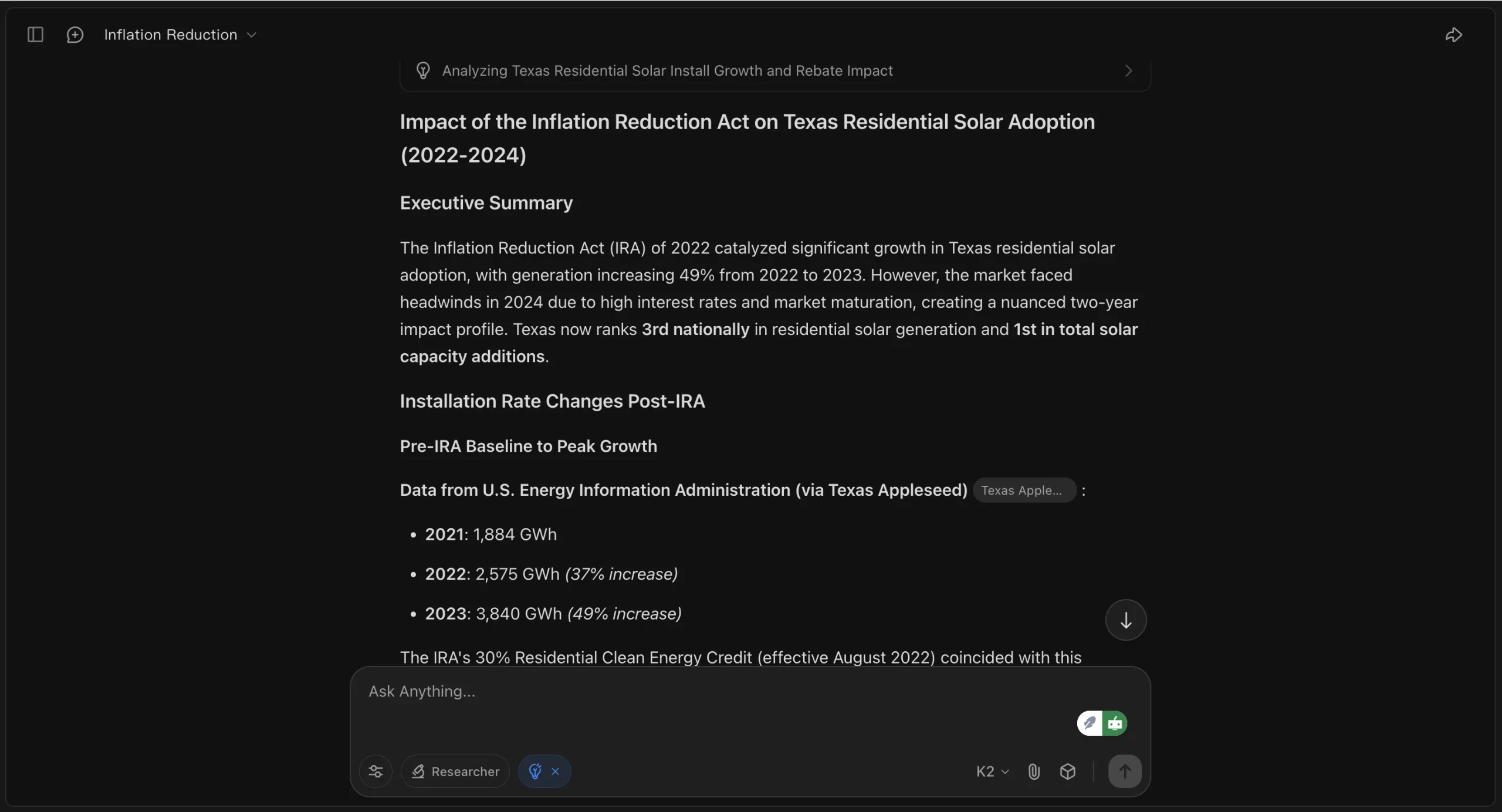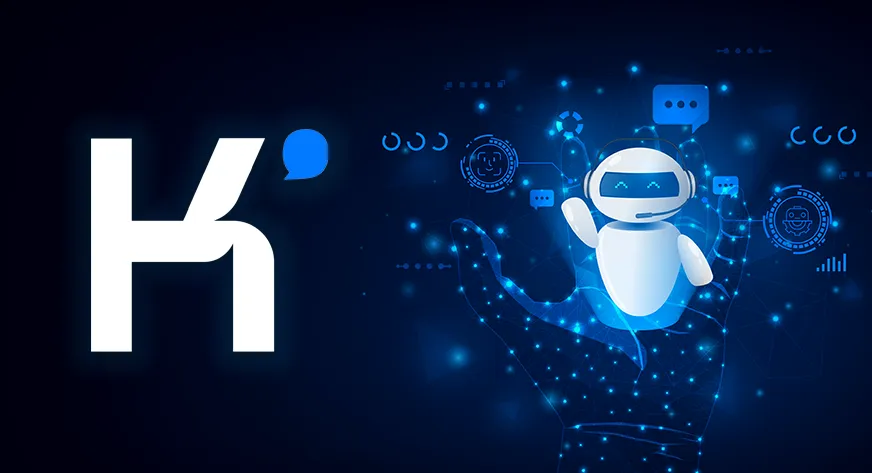Out of all the Chinese AI models available today, Moonshot’s Kimi is my personal favorite! Whether it’s generating slides from a single prompt or performing agentic web browsing, Kimi truly does it all. Just when we thought Kimi K2 was their best model, Moonshot launched an even more powerful upgrade: Kimi K2 Thinking. It is an open-source thinking agent model designed to reason, plan, and act autonomously. Built on test-time scaling, K2 Thinking dynamically expands its reasoning steps and tool interactions as needed, solving complex math, physics, and logic problems step by step, conducting broad, multi-turn web searches with precision, and generating code and content with enhanced structure, creativity, and accuracy. All while setting new benchmarks in agentic performance!
Kimi K2 Thinking Performance
Based on the latest benchmark results, Kimi K2 Thinking demonstrates a compelling performance profile, often leading or competing closely with top models like GPT-5 and Claude across key agent capabilities.
- In agentic reasoning, K2 sets a new high bar with 44.9% on Humanity’s Last Exam (with tools), outpacing both GPT-5 (41.7%) and Claude (32.0%).
- It also dominates in agentic search, achieving 60.2% on BrowseComp and 56.3% on Seal-0, significantly ahead of its rivals.
- In coding tasks, K2 shows strong versatility: it leads on SWE-Bench Verified (71.3%) and LiveCodeBench V6 (83.1%), while trailing slightly behind GPT-5 on SWE-Multilingual (61.1% vs. 68.0%).
How to Access Kimi K2 Thinking?
- You can access the model via the chatbot.
- Weights and code are available on Hugging Face.
- Via API, you can simply use it by switching the
modelparameter:
$ curl \
-H "Content-Type: application/json" \
-H "Authorization: Bearer $MOONSHOT_API_KEY" \
-d '{
"model": "kimi-k2-thinking",
"messages": [
{"role": "user", "content": "hello"}
],
"temperature": 1.0
}'For more details on API use, checkout this guide.
Also Read: Kimi OK Computer: A Hands-On Guide to the Free AI Agent
Trying Kimi K2 Thinking on Diverse Prompts
Task 1: Critical Thinking
Prompt: “Simulate a structured debate between Nikola Tesla and Thomas Edison on the ethics of AI today. Ground their arguments in their actual writings, then extend their worldviews to comment on issues like deepfakes, automation, and open-source models.“
Output:
My Take:
Kimi K2 Thinking delivered an outstanding performance on the task of simulating a historically grounded debate between Nikola Tesla and Thomas Edison on the ethics of modern AI. It accurately reflected each inventor’s documented philosophies. Tesla’s idealism, emphasis on open knowledge, and vision of technology serving humanity, versus Edison’s pragmatism, commercial protectionism, and belief in controlled innovation. Extended these worldviews coherently to contemporary issues like deepfakes, job-displacing automation, and the open-source vs. proprietary AI debate.
The response was structured as a formal, multi-round dialogue with opening statements, issue-specific rebuttals, and closing arguments, all rendered in tones true to their historical personas. Rather than offering generic takes, the model wove in real historical references (e.g., Tesla’s 1898 radio-controlled boat, Edison’s AC/DC smear campaigns) and used them as metaphors for modern AI dilemmas, demonstrating deep reasoning, creative synthesis, and rhetorical sophistication.
Task 2: Research and Analysis
Prompt: “Analyze how the Inflation Reduction Act of 2022 has affected residential solar adoption in Texas over the past two years. Use real government data, utility reports, and local news to estimate the change in installation rates and identify the top three counties driving growth.“
Output:

My Take:
Kimi K2 Thinking successfully identified the character Rudy Cox from a complex, multi-part puzzle involving an actor’s education, sports career, film roles, and TV appearances. It methodically searched for clues, cross-referenced data across sources, and eliminated incorrect candidates to arrive at the correct answer.
The model handled ambiguity, linked unrelated facts like a university’s founding date and a minor sci-fi film and verified each detail against public records. It demonstrated strong, step-by-step reasoning under real-world information constraints, matching its performance on agentic search benchmarks.
Task 3: Coding
Prompt: “Build a CLI tool in Python that auto-generates a daily dev log from my Git commits, Jira tickets, and a short voice note I upload each evening. It should summarize progress, flag blockers, and output a Markdown report“
Output:
My View:
Kimi K2 Thinking gave a practical response to the CLI tool request. It first analyzed the task. Then, it identified key parts: config, Git, Jira, voice transcription, and report generation.
It provided a full Python script using Click. The script included setup steps and required dependencies. It supported core features like detecting blockers from voice notes and generating AI summaries.
For the prototype, it offered a simplified single-file version. This version focused on Git commits. It included clear instructions for adding Jira and voice support later.
The tool showed strong agentic coding skills. It handled multiple data sources, managed API calls and produced structured Markdown output as requested.
Also Read: I Tested Kimi K2 For API-based Workflow
Conclusion
The performance of Kimi K2 Thinking proves that Chinese AI models are not just catching up, they’re setting new standards in reasoning, agentic search, and coding. Across benchmarks like HLE, BrowseComp, and SWE-Bench Verified, it rivals or exceeds leading Western models, often with open-source access and no paywall.
You don’t need GPT-5 or Claude’s premium tiers to achieve deep, tool-augmented results. You just need to know how to ask. Whether it’s solving complex research problems, building tools from scratch, or navigating real-world information with precision, K2 Thinking delivers. The future of AI isn’t locked behind subscriptions; it’s open, capable, and already here!
Login to continue reading and enjoy expert-curated content.

